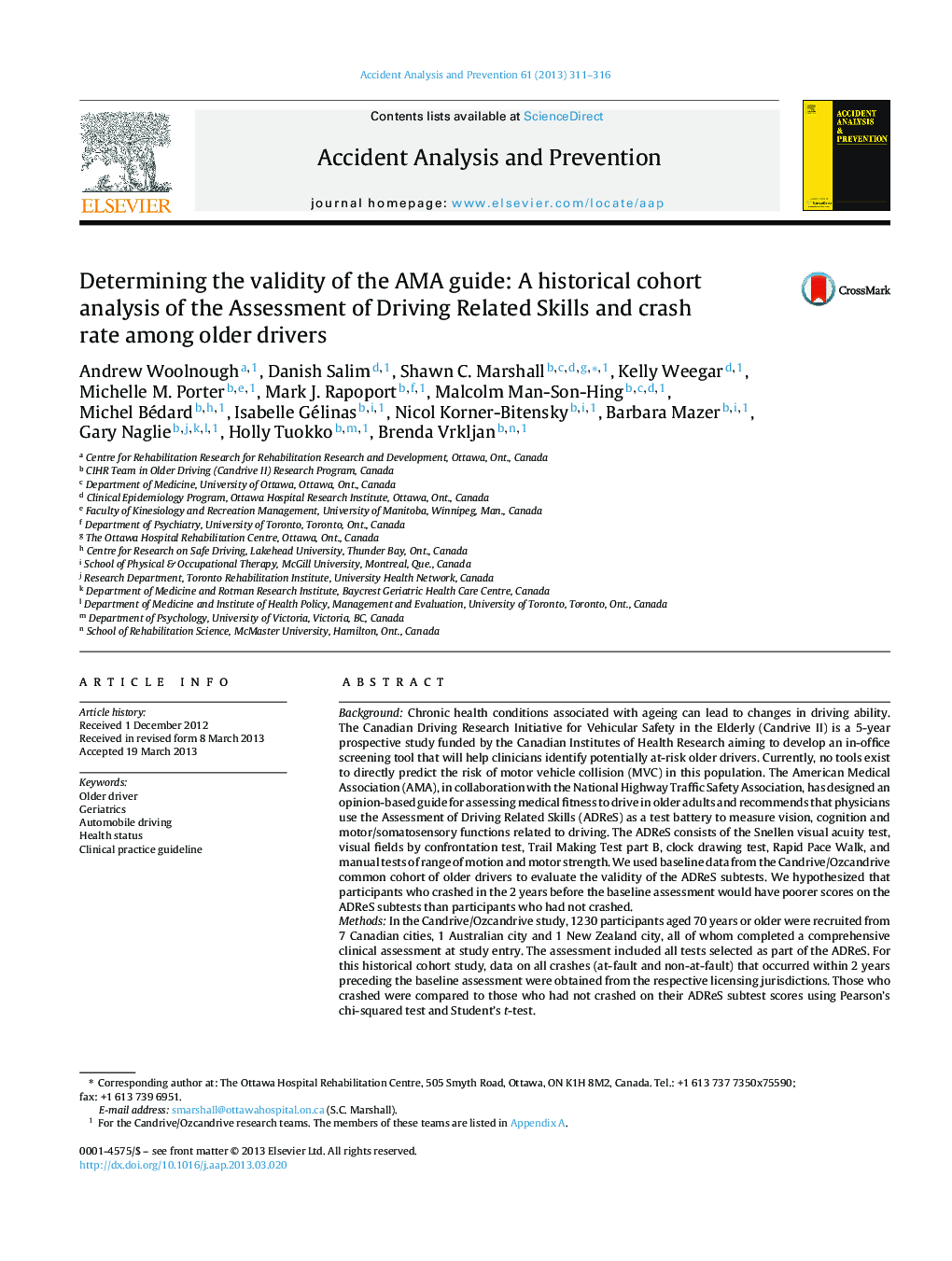| کد مقاله | کد نشریه | سال انتشار | مقاله انگلیسی | نسخه تمام متن |
|---|---|---|---|---|
| 572486 | 1452936 | 2013 | 6 صفحه PDF | دانلود رایگان |

• Based on a historical cohort analysis, the American Medical Association Assessment of Driving Related Skills (ADReS) for older drivers was not associated with collision in the 2 years preceding assessment.
• Prospective derivation of valid predictors of crash risk for medically at-risk older drivers remains a research priority.
• The Candrive/Ozcandrive study is positioned to further prospectively investigate predictors of driving fitness for older drivers.
BackgroundChronic health conditions associated with ageing can lead to changes in driving ability. The Canadian Driving Research Initiative for Vehicular Safety in the Elderly (Candrive II) is a 5-year prospective study funded by the Canadian Institutes of Health Research aiming to develop an in-office screening tool that will help clinicians identify potentially at-risk older drivers. Currently, no tools exist to directly predict the risk of motor vehicle collision (MVC) in this population. The American Medical Association (AMA), in collaboration with the National Highway Traffic Safety Association, has designed an opinion-based guide for assessing medical fitness to drive in older adults and recommends that physicians use the Assessment of Driving Related Skills (ADReS) as a test battery to measure vision, cognition and motor/somatosensory functions related to driving. The ADReS consists of the Snellen visual acuity test, visual fields by confrontation test, Trail Making Test part B, clock drawing test, Rapid Pace Walk, and manual tests of range of motion and motor strength. We used baseline data from the Candrive/Ozcandrive common cohort of older drivers to evaluate the validity of the ADReS subtests. We hypothesized that participants who crashed in the 2 years before the baseline assessment would have poorer scores on the ADReS subtests than participants who had not crashed.MethodsIn the Candrive/Ozcandrive study, 1230 participants aged 70 years or older were recruited from 7 Canadian cities, 1 Australian city and 1 New Zealand city, all of whom completed a comprehensive clinical assessment at study entry. The assessment included all tests selected as part of the ADReS. For this historical cohort study, data on all crashes (at-fault and non-at-fault) that occurred within 2 years preceding the baseline assessment were obtained from the respective licensing jurisdictions. Those who crashed were compared to those who had not crashed on their ADReS subtest scores using Pearson's chi-squared test and Student's t-test.ResultsSixty-three of the 1230 participants (5.1%) were involved in an MVC within the 2 years preceding the baseline assessment. Contrary to our hypothesis, there were no statistically significant associations between abnormal performance on the tests constituting the ADReS and history of crash in the previous 2 years (p > 0.01).DiscussionWe found that a history of crash in the previous 2 years was not associated with abnormalities on the subtests comprising the ADReS. This suggests the need for prospective analyses of risk factors over time to establish sensitive, valid predictors of crash that can be incorporated in clinical practice guidelines.
Journal: Accident Analysis & Prevention - Volume 61, December 2013, Pages 311–316